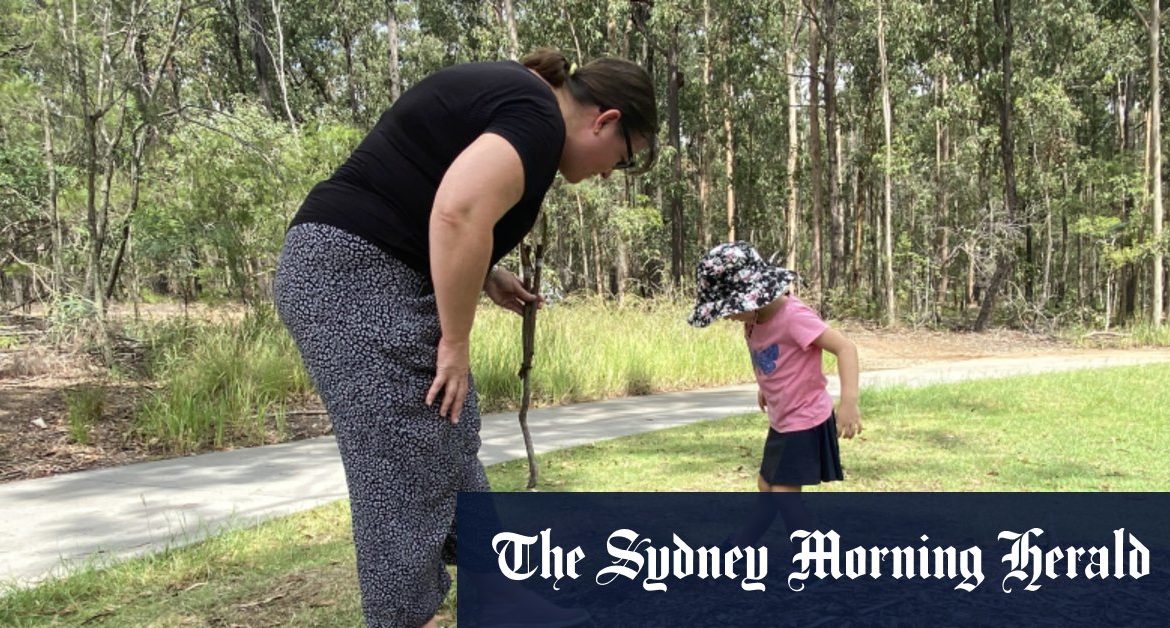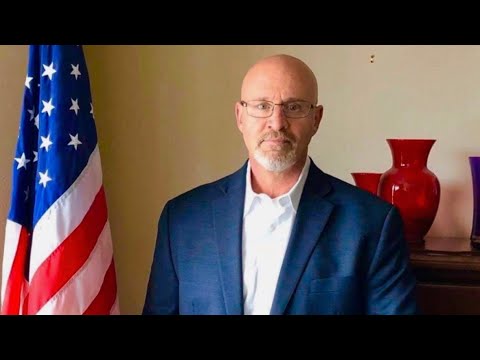She says children at that age form opinions and are able to make decisions about relatively complex ideas, including transport, protecting animals and saving water.
Dr O’Gorman says while there are no set “environmental studies” in primary schools, “sustainability” is taught as an issue across the curriculum.
Many parents at the Bush Kindy and Creek Neighbours’ courses also experience the Australian bush for the first time. Credit:Tony Moore
“But what we find is, that really depends on enthusiastic teachers with those sorts of skills.”
Tuesday’s Bush Kindy class is about Australian animals. No lions or tigers here. The children sing, collect, look for wombats, lizards, gum trees and water, and consider recycling.
In 2019, Brisbane City Council found there was a gap in programs catering to this age group.
Now three Brisbane nature centres – the Downfall Creek Bushland Centre at McDowall, the Karawatha Forest Discovery Centre near Stretton, and Boondall Wetlands – run Bush Kindy and Creek Neighbours programs.
Last year 4000 toddlers went to a weekly Bush Kindy class, while the new Creek Neighbours trial for slightly older children involves more than 700 kids.
The demand from parents is high, schools co-ordinator Jo Fryer says.
“For years we have run a program called Bush Neighbours for year 4 students [eight to nine years of age], and we do about 15 Bush Neighbours schools a year across Brisbane,” she said.
“Then we started to run the Bush Kindy classes [for toddlers] and we realised there was a gap in the middle to teach the children about the habitat around their local creek.” Hence, the new Creek Neighbours program was developed.
“We play a little game,” Ms Fryer says. “What does a healthy and an unhealthy creek look like?”

Brisbane City Council’s Creek Neighbours and Bush Kindy co-ordinator, Jo Fryer, says demand for the programs is high.Credit:Tony Moore
Mum Katrina Hohn has brought daughter Ellie several times to the Bush Kindy classes.
“We made a bug and we saw lots of bugs. And we went walking in the bush and I stepped on an ants’ nest. They nearly bit my shoe,” Ellie says.
Ms Hohn says she believes this year – the year before Ellie is due to start school – is the best time for her to learn about environmental issues, as Ellie was too young on previous visits.
“I am a teacher and I know that schools don’t do things like this,” Ms Hohn says.
“One of the best things they do is take a bucket and collect things – it makes them slow down and look. Last time, we collected sticks and bark, which we stuck into clay and made a model.
“It made us talk about bark and leaves and not just walk over the top of them.”
Tony Moore is a senior reporter at the Brisbane Times
Most Viewed in National
Loading







